Explore the top 7 tourist famous places in Varanasi on our website. Discover the rich cultural heritage and historical significance of this ancient city.
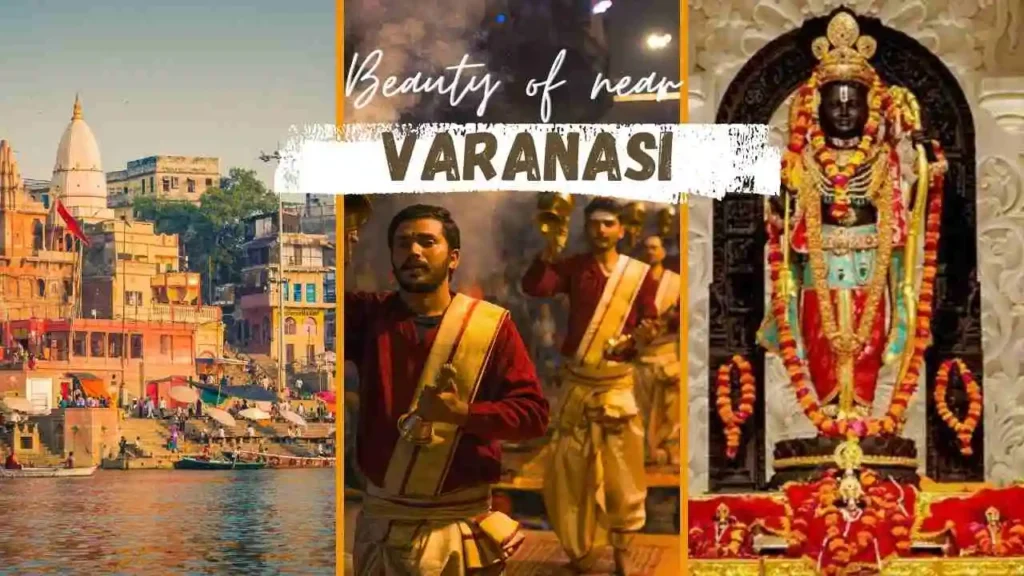
I intend to provide you with all of the information you need about the Ghats of Varanasi and the nearby attractions. If you’re coming to Varanasi, you should also go to these places.
Varanasi, also known as India’s spiritual capital, is full of culture and history. Consistently, a large number of explorers go there to take in its particular appeal. We’ll take a look at the top seven tourist attractions in Varanasi that you absolutely must visit.
Varanasi is considered to be one of Hinduism’s holiest and oldest cities. It is regarded as India’s spiritual capital and has ties to Lord Shiva. It is believed to have been the residence of Lord Shiva and Goddess Parvati.
Tourist Places In Varanasi
1. Sarnath
Sarnath, located close to Varanasi in the Indian state of Uttar Pradesh, is crucial to the growth of Buddhism and spirituality. Considering that it was here that Master Buddha previously bestowed the Dharma following his illumination at Bodh Gaya, it is viewed as one of the main Buddhist journey locales.

Featured Attractions:
Dhamek Temple: The Dhamek Stupa is a massive brick stupa dedicated to the site where the Buddha delivered his first sermon. Mulagandhakuti Vihara is also thought to have been built during the Gupta era: The Buddha is said to have spent his first rainy season in Mulagandhakuti Vihara in Sarnath after giving his first speech. The building currently houses a life-size Buddha statue.
Stupa Chaukhandi: The Chaukhandi Stupa is a small, hemispherical stupa that marks the spot where the two main students of Buddha, Shariputra and Maudgalyayana, first met him while traveling to Sarnath.
Thai Church: This beautiful temple was built by the Thai government. It has beautiful murals that show the life of Buddha and has elaborate architecture.
Museum of Archaeology: The exhibition hall has a huge assortment of Buddhist curios that shed light on the set of experiences and culture of the area. Inscriptions, old coins, and sculptures are among these items.
Sarnath National Park: The is home to a variety of noteworthy designs, including what survives from a sanctuary, a stupa, and a religious community.
Importance spiritually: As one of the four essential Buddhist journey destinations alongside Lumbini, the origin of the Buddha, Bodh Gaya, the site of his illumination, and Kushinagar, the area of his achievement of Mahaparinirvana Sarnath is profoundly emblematic for Buddhists everywhere. It is where the Buddha laid out the Sangha, or request of priests, and uncovered the Dharma wheel, or the Buddhist lessons. Individuals can interface with the profound center of Buddhism and look into the life and lessons of Ruler Buddha by heading out to Sarnath.
2. Ramnagar Fort
Significance:
Ramnagar Fort, which is in the Indian state of Uttar Pradesh and is close to Varanasi, is significant from a spiritual, cultural, and historical perspective. It was built in 1750 by Raja Mankoji Rai of Kashi, who then found the rulers of Banaras. The post’s charm is improved by its eminent assortment of old fashioned vehicles.
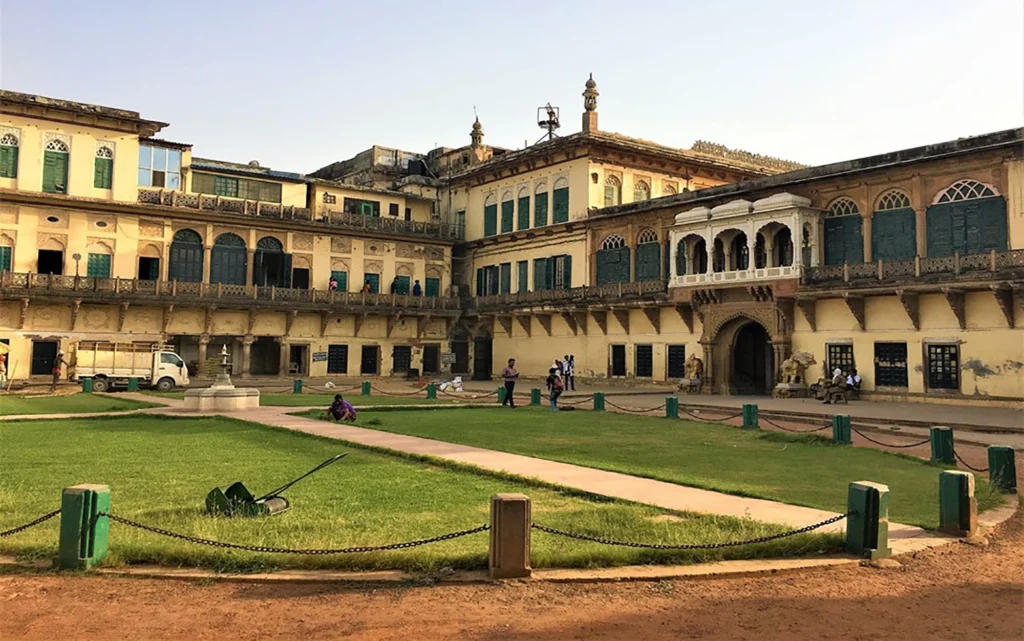
Featured Attractions:
A collection of over sixty historic automobiles, some of which have been around for over a century, can be found in the historic Car Museum. These vehicles, which were claimed by the Banaras illustrious family, offer understanding into the rulers’ lifestyle.
Aarti Ganga: The Ramnagar Fort is best known for its evening Ganga Aarti, a religious ceremony held on the banks of the Ganges. During the aarti, it is captivating to see priests praying to the river deity and singing hymns.
Boating: Boat trips down the Ganges River, which offer breathtaking views of Varanasi’s city and ghats, are a popular tourist activity.
Kachhpura Town: For a unique perspective on rural life in the region, go to the nearby village of Kachhpura, where the well-known movie “Paa” was shot.
Structure of the Fort: The fort itself is an excellent example of Awadhi and Mughal architecture with its striking courtyards, exquisite carvings, and red sandstone walls.
Importance spiritually:
Ramnagar Post has serious areas of strength for a to Varanasi’s strict importance. One of the holiest places in Hinduism, the city is known for its numerous temples and ghats. The fort’s proximity to the Ganges River and connection to the Banaras royal dynasty increase its spiritual significance.
In conclusion, the Ramnagar Fort, which is close to Varanasi, is a significant historical, cultural, and spiritual location that provides visitors with a unique understanding of the region’s rich history and the spirit of the holy city.
3. Dasaswamedh Ghat Famous Places In Varanasi
Significance:
Arranged in the sacrosanct city of Varanasi, Dasaswamedh Ghat is critical to Indian otherworldliness and culture. It is one of the most important ghats because it is next to the holy Ganges River. The ghat gets its name from the mythical account in which Lord Brahma gave Lord Shiva ten horses as sacrifices (Dasaswamedh) when he arrived in the city.

Featured Attractions:
Aarti Performance: The Ganga Aarti at Dasaswamedh Ghat in the evening offers a stunning view. Sightseers gather to implore the stream while drones, rhythms, and glinting lights give ambient sound.
Temple of Vishwanath Kashi: Situated close to the ghat, this notable sanctuary praises Master Shiva. It attracts devotees and millions of visitors from all over the world.
Picturesque Perspectives: From Dasaswamedh Ghat, you can see the Ganges River and the nearby ghats beautifully at sunrise and sunset.
Boat Rides: Take a boat ride along the ghats to see the old buildings and tranquil atmosphere of the city.
Shopping: In addition to typical Indian handicrafts, there are numerous stores in the ghat area that sell silk sarees, religious items, and regional specialties.
Importance spiritually:
Dasaswamedh Ghat has incredible profound importance and is viewed as perhaps of Varanasi’s holiest area. It is believed that bathing in the Ganges River at this ghat can atone for sins and bring salvation.
For More Learn About Historical Places Go to Our Site Anyquery.in
4. Bharat Mata Mandir
Significance:
Bharat Mata Mandir, India’s most significant religious site, is very spiritually significant and is close to Varanasi. It reflects the nation’s spirit and culture while also paying tribute to Bharat Mata, the nation’s founder. Sri Abhiram Das, a writer and freedom warrior, built the sanctuary in 1936.

Featured Attractions:
Bharat Mata Sculpture: The temple’s main draw is the white marble Bharat Mata statue. The 32-foot-tall statue is regarded as a symbol of national unity and pride.
Geeta Temple: This shrine has a library of literature and books about the Bhagavad Gita next to the Bharat Mata Mandir.
Architecture: The temple combines modern and Indian design elements to create a masterpiece of architecture. The walls’ mind boggling plans and designs depict different occurrences from Indian folklore and history.
Museum: In addition, there is a museum at the temple that displays guns, photographs, and other artifacts from the Indian freedom movement.
View from Above: The temple offers a panoramic view of Varanasi and the Ganges River.
Importance spiritually:
Bharat Mata Mandir is extremely sacred to Indians because it represents both the spirit of the nation and the motherland. People are motivated to uphold the values of unity, patriotism, and national pride when they are reminded of the sacrifices that liberation fighters made.
The individuals who visit this sanctuary can lay out an association with India’s otherworldly energy and request favors for the nation’s development and thriving. It likewise supports a feeling of having a place among people from different regions and societies and the possibility of public solidarity.
5. Nalanda
Significance:
Through a visit to this temple, devotees can connect with India’s spiritual energy and seek blessings for the country’s progress and prosperity. It likewise assists individuals from different regions and societies with feeling a feeling of having a place and advances the idea of public solidarity.
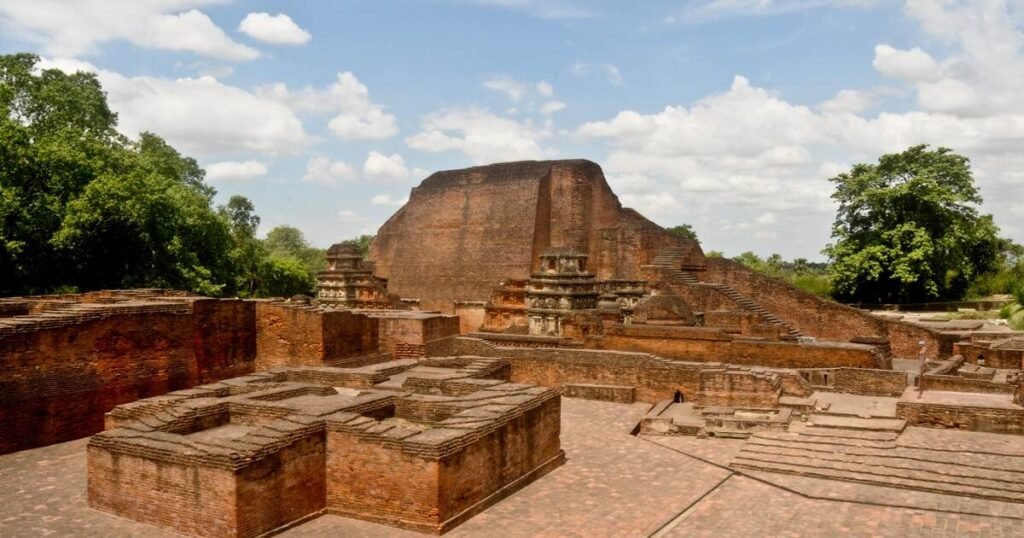
Key Attractions:
The Nalanda archaeological site contains remnants of temples, monasteries, and the former university. The following are a few of the main draws:
Nalanda College Vestiges:
The brick-built buildings, stupas, and monasteries that make up these university’s relics shed light on the period’s architectural style.
Hall of Hiuen Tsang’s Memorial: Xuanzang, a notable Chinese researcher and voyager who went to Nalanda College, is regarded in this historical center. Documents, antiques, and other relics from the university’s past can be found there.
Museum of Archaeology: Through its collection of antique sculptures, coins, pottery, and other items, this museum provides an insight into the extensive cultural legacy of Nalanda.
Numerous Temples and Stupas: Additionally, the location is home to a number of stupas and temples that hold spiritual and historical significance. The Naropa Temple, the Ratnagar Stupa, and the Kudmabihar Stupa are examples of these.
Spiritual Weight: Being a significant center for Buddhist grant and the development of Mahayana Buddhism, Nalanda is very influential for Buddhists on an otherworldly level. Numerous notable Buddhist thinkers, including Aryadeva, Nagarjuna, and Atisha, were associated with Nalanda University. Additionally, it is believed that Buddha himself visited this location during his lifetime.
6. ISKCON Varanasi
Significance:
Cultural Relevance: ISKCON Varanasi honors India’s extensive cultural legacy, particularly its philosophical and spiritual aspects. The sanctuary advances culturally diverse discourse and understanding by drawing vacationers from one side of the planet to the other.
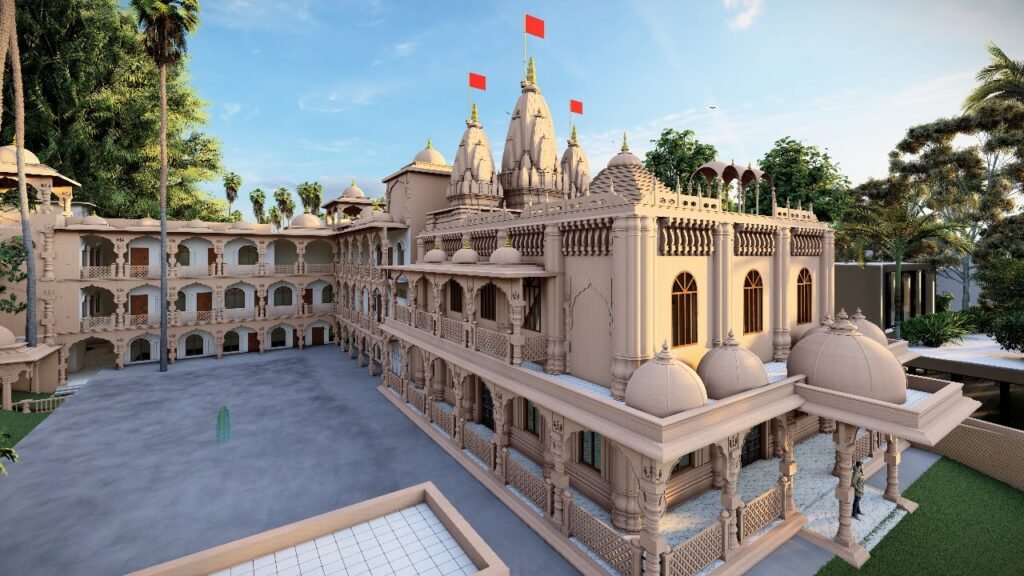
Relevance for education: The temple complex contains the Gurukul, a school that provides students with spiritual instruction and traditional Vedic knowledge. This preserves for future generations the wisdom and practices of the ancient Indians.
Key Attractions:
Deities: The temple is home to other well-known Vaishnavite figures as well as exquisitely carved representations of Lord Krishna and Radha. Guests can pray to these gods and perform puja, or worship.
Architecture: The architecture of the temple is a combination of contemporary and traditional Indian architecture. The temple’s intricate carvings, vibrant colors, and grandeur make it an architectural masterpiece.
Bhaktivedanta Institute: This well-stocked library within the temple contains books on Indian philosophy, spirituality, and religion. These are useful assets for anyone with any interest in finding out about and grasping customary Indian insight.
Cultural Activities: ISKCON Varanasi frequently hosts cultural events like kirtans (music of devotion), seminars, and workshops to give guests a full spiritual immersion.
Spirituality’s Importance:
In this temple, Lord Krishna and Radha are honored. It is where aficionados can rehearse otherworldliness, interface with their magnificent energy, and track down internal peacefulness. The temple adheres to the Gaudiya Vaishnavism tradition, which places an emphasis on loving devotion to Lord Krishna.
7. Betla National Park
Significance:
Betla National Park, also known as Palamu Sanctuary, is in the Indian state of Jharkhand, not far from Varanasi. It is very important because it helps to maintain the area’s ecological equilibrium and has a wide range of flora and fauna.
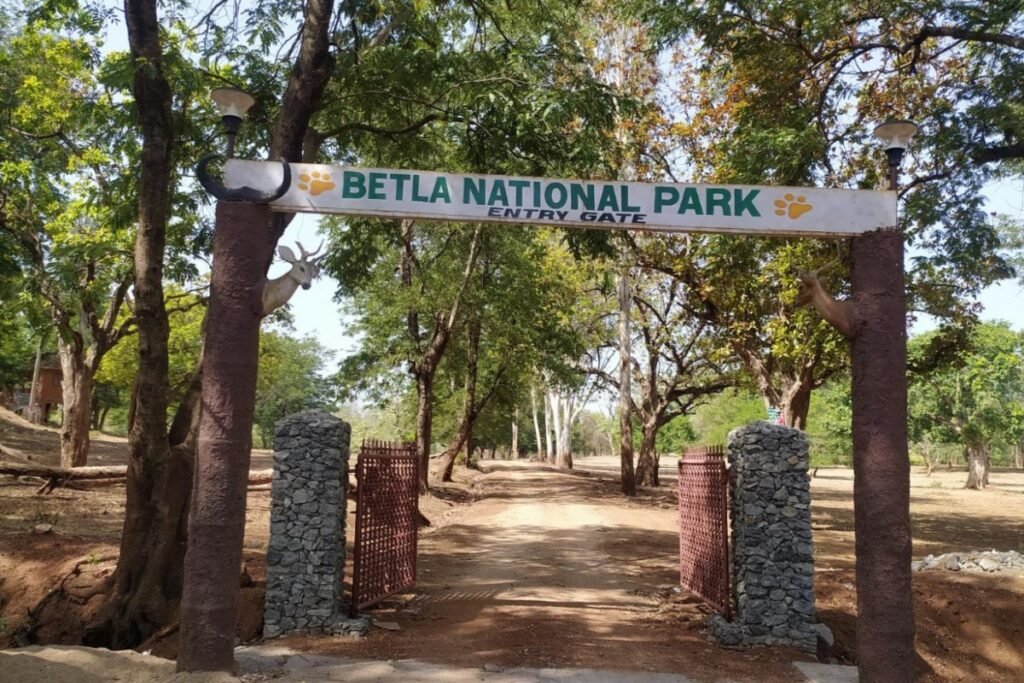
Key Attractions:
Wildlife: Betla National Park is home to the Indian bison (gaur), sambar deer, chital (spotted deer), sloth bears, tigers, leopards, and a variety of other bird species.
Waterfalls: The Sunar and Dhurva waterfalls, two of the park’s most popular attractions, are among the stunning waterfalls that can be found there.
Beauty in Nature: The recreation area is an extraordinary spot for nature sweethearts and picture takers, with its shocking perspectives on profound valleys, slopes, and woods.
Sehenswürdig places: Within the park is the historic Betla or Baidyanath Dham Temple, a significant Hindu pilgrimage site dedicated to Lord Shiva.
Importance spiritually:
For Hindus, the Baidyanath Dham Sanctuary, which is arranged inside Betla Public Park, is very holy. It is one of the 12 Jyotirlinga shrines, which are believed to be the most sacred home of Lord Shiva. A huge number of admirers visit the sanctuary every year, especially during the Maha Shivratri festivity.

